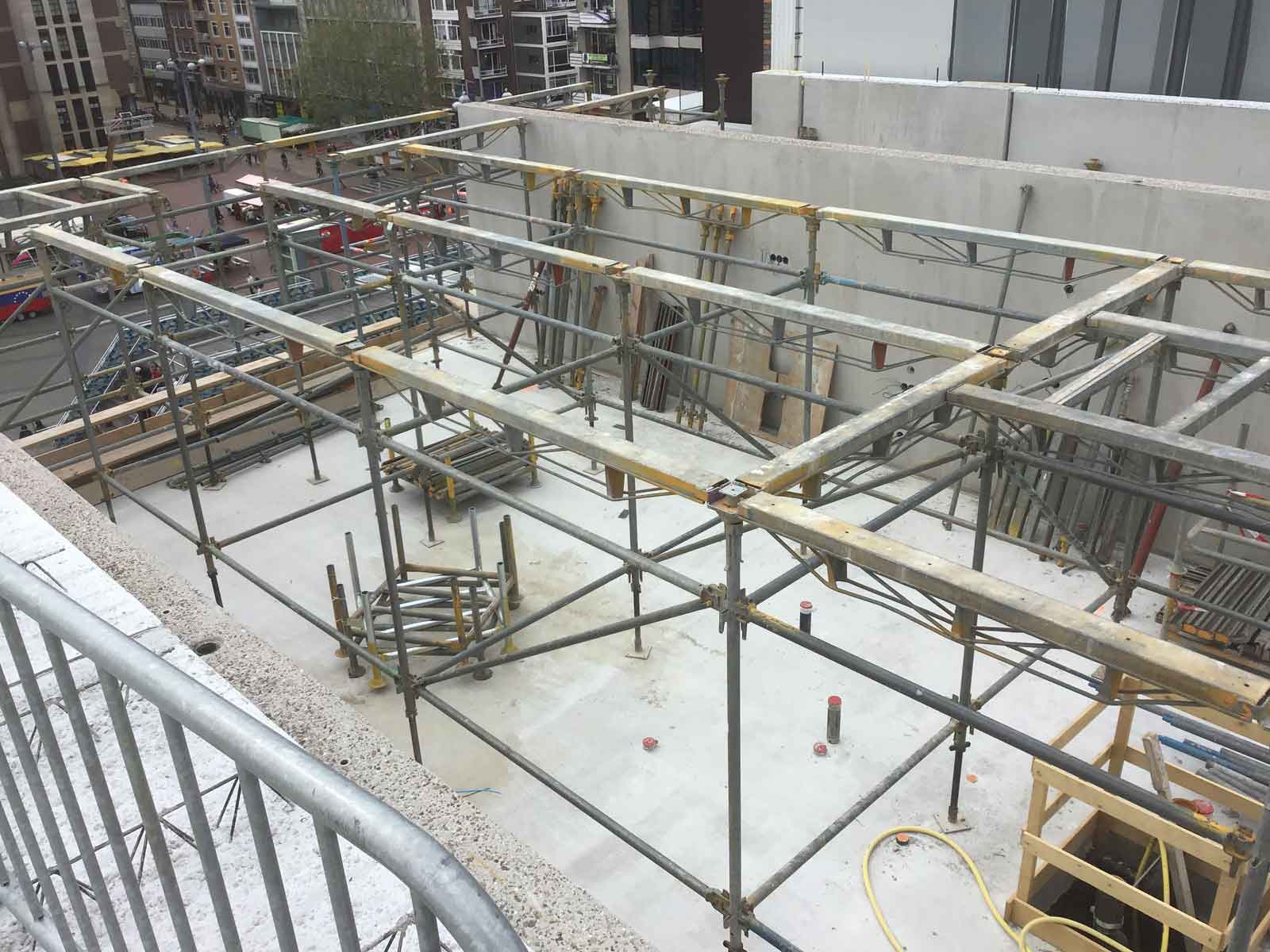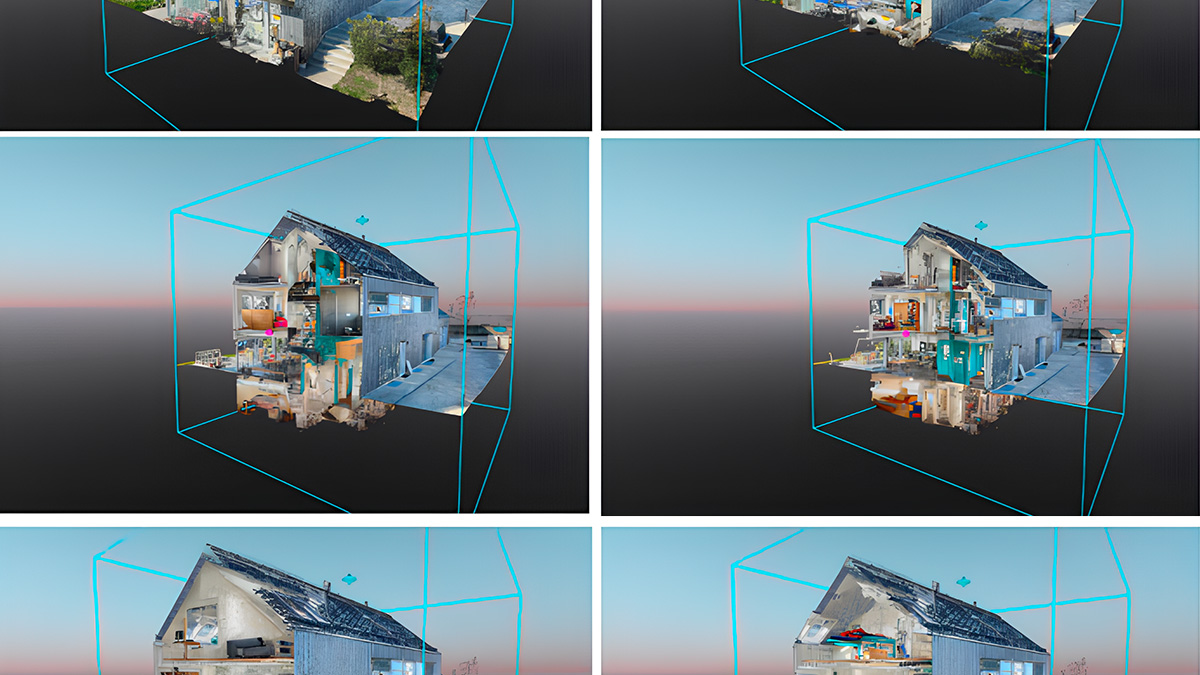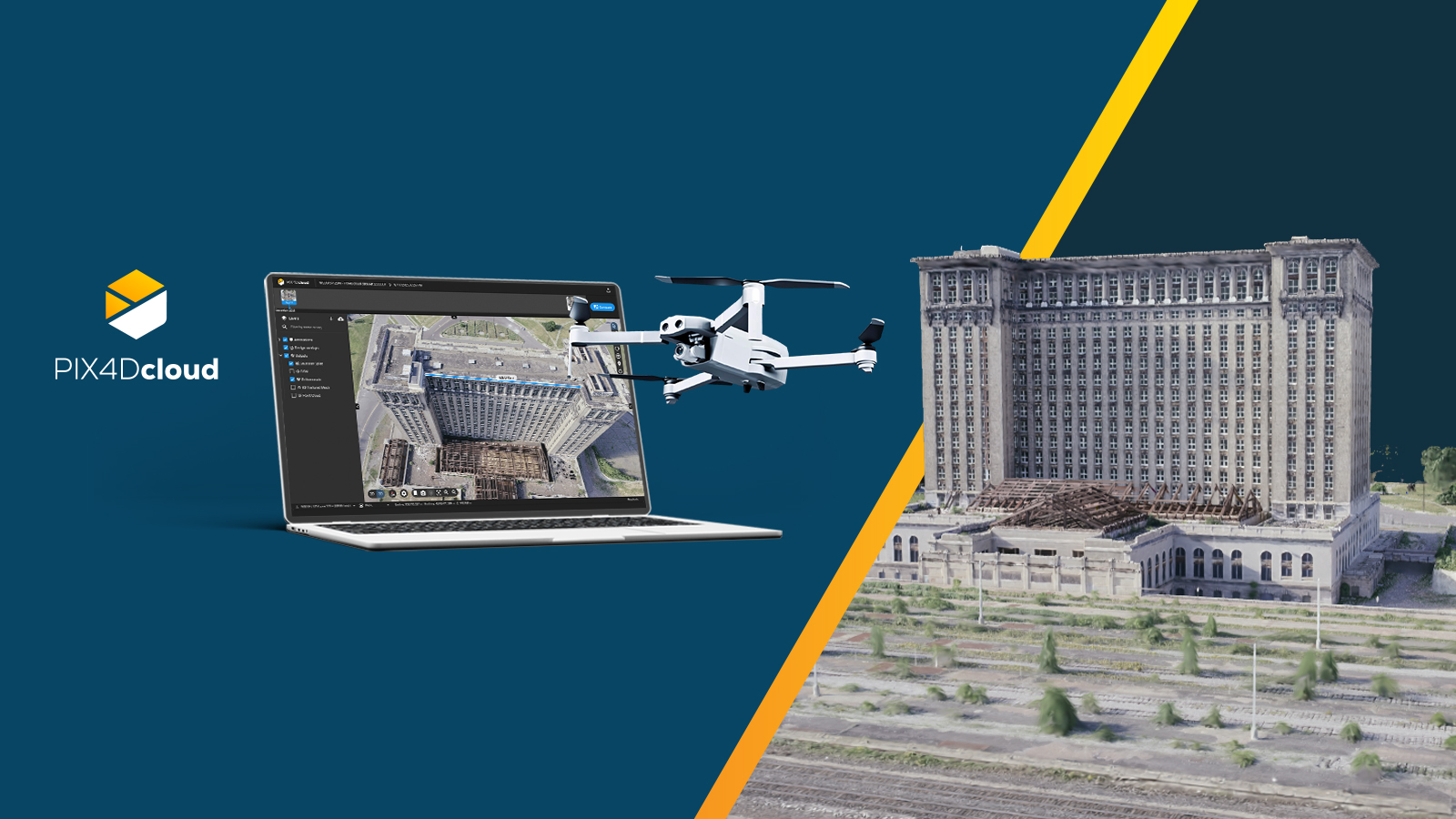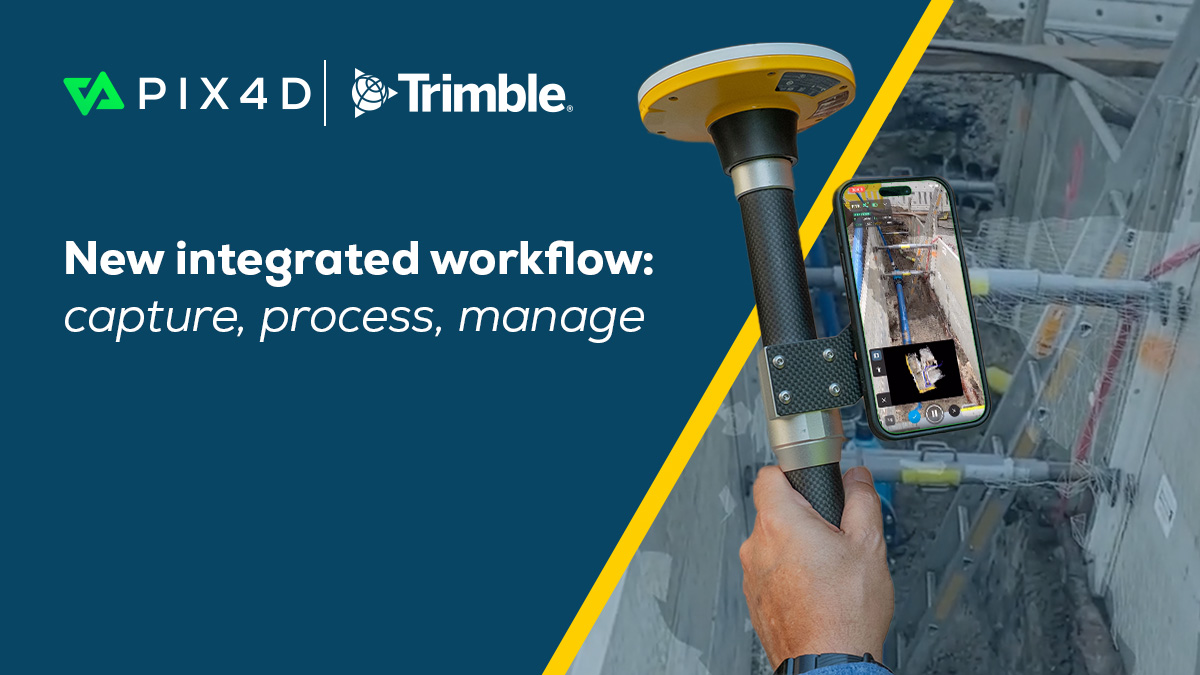How to avoid construction errors and costly rework
| First published | January 27, 2020 |
| Updated | June 30, 2020 |
Building residential properties is not always simple. And if the jobsite is located in a tight downtown space, the project becomes very challenging, and every mistake very costly. [VolkerWessels], a well-established Dutch construction company, met these project challenges with an innovative solution: the Pix4D CraneCamera.
In this post
- About the project
- Choosing prefabrication in a tight jobsite
- Avoiding traffic congestion around the building site
- Keeping the project on track with the CraneCamera solution
- Spotting a crucial error and preventing a costly mistake
- Consequences of not spotting the construction error on time
- Integrating CraneCamera data into the BIM workflow
- Try the CraneCamera solution
Going up downtown
In 2018, VolkerWessels were commissioned to build a hotel, in the WestCord hotel chain, located in the city centre of Groningen, the Netherlands.
The building is expected to be finished in the spring of 2020 and will consists of 123 rooms, spread over six floors, as well as a 1,000m² catering area, suited on the Grote Markt. Since Groningen is prone to earthquakes, one of the requirements for the hotel is to be earthquake proof.
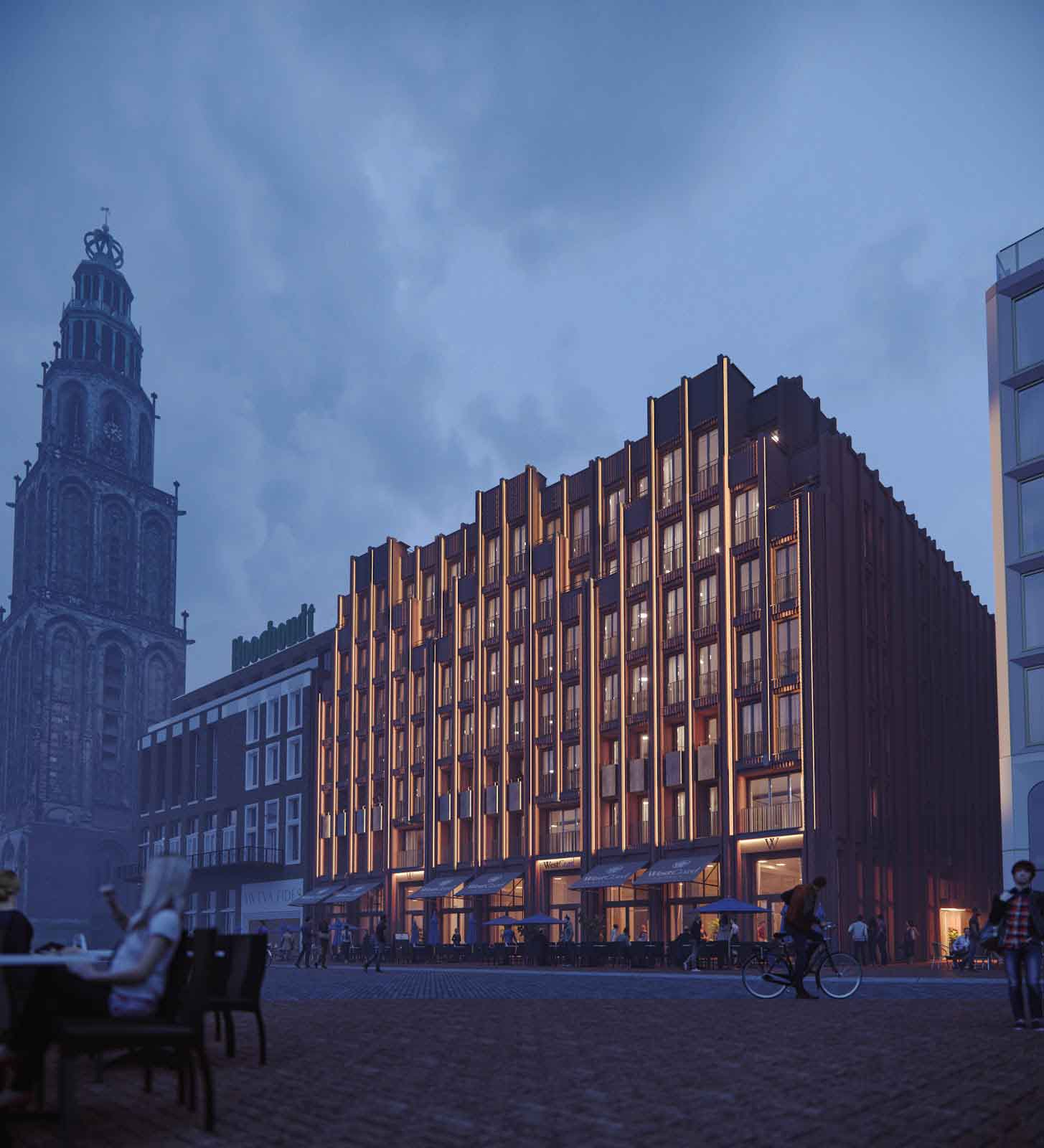
Project details: downtown hotel
| Company | VolkerWessels |
| Location | Groningen city centre, the Netherlands |
| Project dates | June 2018 - April 2020 |
| Project size | 8,020 m² gross floor area |
| Data acquisition | Twice per day |
| Hardware | CraneCamera solution |
| Software | Former Pix4Dbim - Now Pix4Dcloud Advanced |
No room for error: building on a tight construction site
The site is located in the city's busiest area, leaving no space for storing or assembling materials on site. As a result, VolkerWessels’ team counts on prefabricated modules.
While prefabrication saves time and space on site, it requires precision scheduling and planning of deliveries.“Once delivered, the prefabricated elements have to be installed immediately. Every minute delay can cause truck traffic and we want to avoid it. The most challenging part of the project is that everything must fit at once - there is no place for deviations. We use prefabricated modules, and if there is a mistake, it would cost us a lot of effort and time to re-make the elements,” explains Arnold Pit, BIM Process Manager at VolkerWessels.
Avoiding congestion at all costs
The central location of the project imposes careful logistics planning on VolkerWessels’ team. There is a strict schedule for assembling prefabricated modules and deliveries since “every deviation would cause delay in logistics, and sequentially in the project,” says Pit.
The team has to schedule the deliveries every morning to avoid causing truck traffic from material and equipment suppliers in the afternoon. “We are tight to specific times to deliver our materials. Due to regulations, we can not be a reason for traffic,” comments Pit. There are two other construction sites next to the VolkerWessels' site, so delivery times have to be coordinated with them as well.
Watch this story as a webinar
Find out how the CraneCamera helped VolkerWessels avoid costly rework. Watch the webinar.
Keeping the project on track with the Pix4D CraneCamera solution
To avoid any schedule deviations and logistics problems, the team has to be aware of the daily progress of the project. Since drones were impossible to fly downtown Groningen, and the team has already seen the benefits of the Crane Camera solution in a pilot project in Eindhoven (coming soon - sign up to be notified by email), the decision was obvious.
The project data delivered from the CraneCamera solution is used by different team members and stakeholders.
- Superintendent - daily checks the formwork and the floor steel; to plan daily work and logistics.
- Project manager - mainly for visualization, to show the project progress to the client.
- Earthquake specialist - to check the installations and make sure the building meets earthquake regulations.
- MVP subcontractor - to check installations, such as ventilation and electricity.
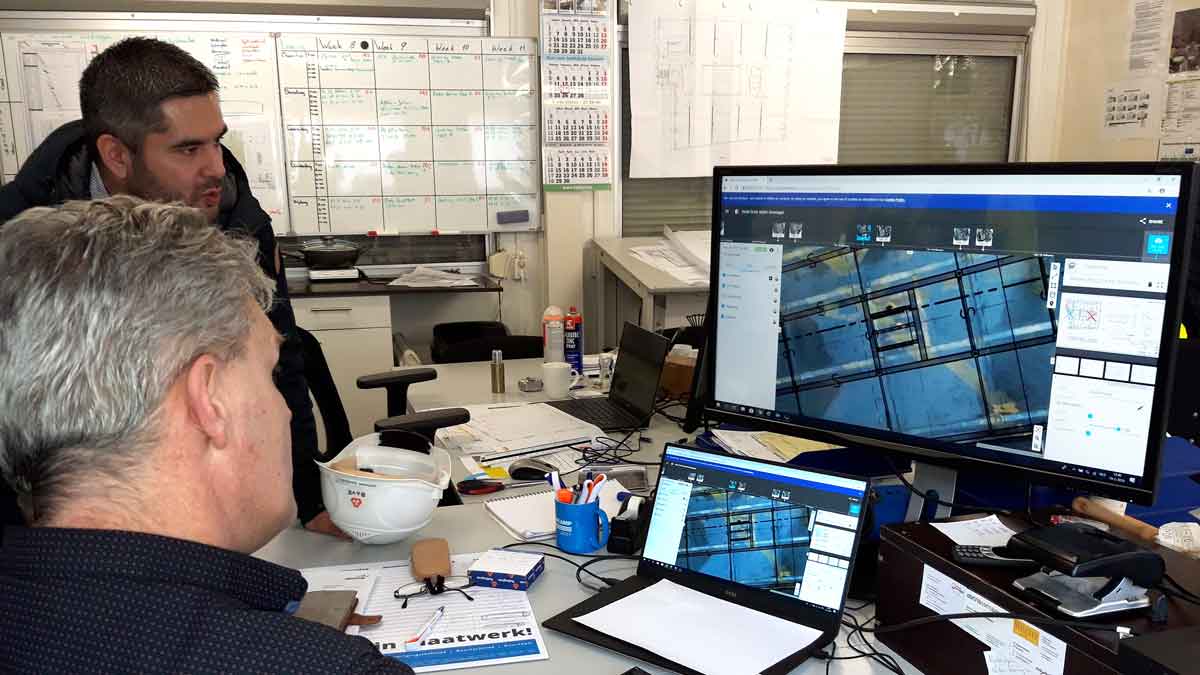
Spotting a crucial error and preventing a costly mistake
As part of his daily work, the superintendent looks at the CraneCamera data in the Pix4Dcloud Advanced platform every morning by checking the as-built vs as-designed using the Overlay tool. In one of his usual checks, he noticed that the floor formwork was not in the right place, deviated by 35cm.
“In the field, you cannot see such an issue immediately, you discover it later on in the process. But with the CraneCamera, you can see it on the same day. In this case, the superintendent shared the project with the people on site and asked them to check it. They realized that the formwork was deviated by a few centimeters. In the end, before the mistake really happened, they already corrected it - and that is really powerful. I cannot imagine how we could have discovered this error so early without this tool,” shares Pit.
Without the CraneCamera solution, the superintendent would have to physically go on the site and make his own measurements but “he would not do this very often since it takes too much time,'' comments Pit.
Consequences of not spotting the construction error on time
Spotting misplaced formwork is critical as formwork affects the structural performance of concrete.
Misplaced formwork may lead to unbalanced loadings, and consequently failure of the formwork, and potentially structural collapse.
Pit explains: “If the error was not spotted in time, the worst case scenario would be to pour the concrete for the floors and discover that the structure is unbalanced. This could be very dangerous and result in building failure. This would have irreversible consequences.”
“Another possibility would be to discover that there is not enough support for the elements on the floor while laying the concrete on the formwork. In this case the team would have to uninstall all these elements, and re-make them. This would delay the project and lead to increased costs and extra efforts.”
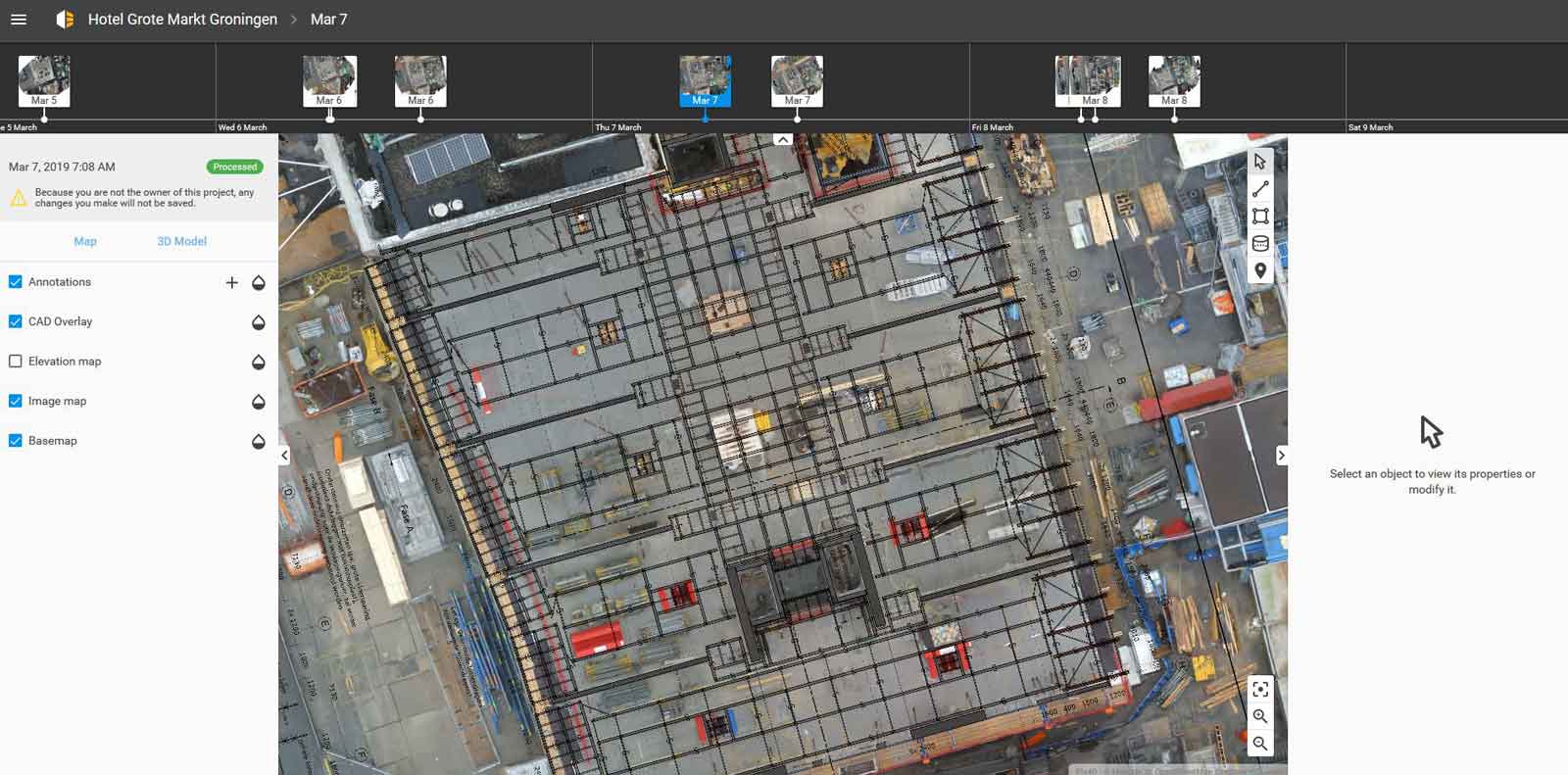
Integrating CraneCamera data into BIM workflow
As part of their BIM workflow, VolkerWessels’ team exports the point clouds, generated by the CraneCamera, and imports them in Trimble Connect, where the data is used for visualization and communication purposes.
One solution documents the project to prevent delays and costly rework
With the help of the Crane Camera solution, the VolkerWessels' team avoided potential delays and costly rework. They also continue to keep track of the project and solve the logistic and planning challenges of the downtown hotel project.
Interested in knowing more about how and why VolkerWessels started their first project with Pix4D CraneCamera? Find out here.

